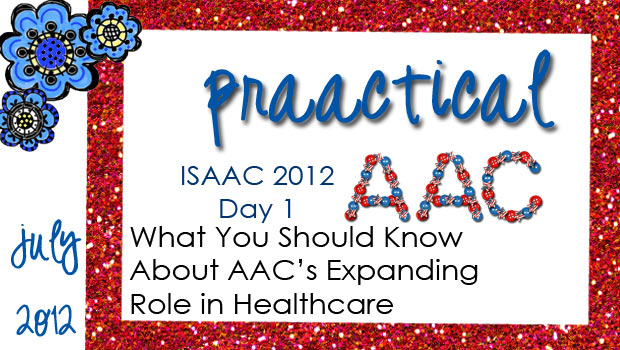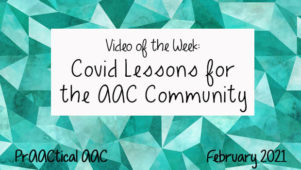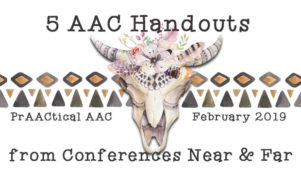Day 1 at ISAAC 2012: What You Should Know About AAC’s Expanding Role in Health Care

 Welcome to ISAAC, 2012!
Welcome to ISAAC, 2012!
—
It’s the first day of the ISAAC pre-conference and the focus of the workshop I attended was on healthcare. It was quite an honor to learn from such a stellar group of AAC professionals, including Sarah Blackstone, John Costello, Kathryn Garrett, Richard Hurtig from the US and Cristina Cerantola, Elisabeth Cataix Negre, several others from around the world, who came together to talk about effective patient-provider communication. As we well know, the AAC community is one of several communication vulnerable populations that require special supports when accessing health care. This presentation was highly interactive and covered best practices, strategies, and technologies that we should be putting into place for people with AAC needs as they interact with medical personnel.
–
There was a wealth of resources shared during the workshop, mostly of very prAACtical resources. We have permission to share many of them here. Watch for an upcoming post on resources designed specifically for helping people with communication challenges have better interactions with their healthcare providers..jpg)
—
Here are some of the key points and resources from the day.
- There may be a common mis-perception among healthcare providers that if the patient is awake, alert, and oriented, there is no need to communicate with the patient’s caregivers. This is wrong and an inaccurate interpretation of the patient’s rights under the Americans with Disabilities Act.
- Similarly, patients may misinterpret some of the pre-admission instructions given to patients regarding not bringing valuables. Patients who require supports such as SGDs and hearing aids, should indeed bring those to the hospital with them.
- Some hospitals, such as the University of Pittsburgh Medical Centers, are developing tools for the community so that they know how to access their rights in health care settings. This includes communicative supports, service animals, and the use of AT in the medical setting. These will be sent to patients, as needed, prior to hospital admission so that they can better prepare, know their rights, etc.
- The US Department of Justice has just launched an initiative for more aggressive enforcement of ADA to create barrier-free access to appropriate healthcare. This includes access to supports for effective communication. Patients who do not get appropriate support for appropriate communication exchanges can file an ADA complaint. This new initiative, among other things, will step up investigation and enforcement of these issues.

- A great way to enhance comprehension during medical procedures and hospitalization is to create or download picture communication boards and have the healthcare provider use these as they speak to the patient. Pointing to the pictures enhances the patient’s understanding. See this webpage from the ISAAC-Francophone chapter for some excellent examples of boards and posters that are used for this purpose.
- Asking the patient, “Do you understand?” is a poor way of assessing comprehension. Health care providers should use the ‘Teach Back’ method as the primary way of ensuring that patients understand directions. ‘Teach Back’ essentially has the patient demonstrate what they learned (e.g., using an inhaler).
- There are a lot of existing resources about communication in medical situations that would be helpful to the AAC community, but finding them is a challenge. The resources are scattered and not always easy to access. We need to find better ways to get professionals plugged in so that we’re not reinventing the wheel.
- There was some interesting discussion around the concept of people who use AAC being a subset of larger group of communication vulnerable people, such as those who have hearing impairment and those with limited English proficiency. Sarah Blackstone made a case for talking about access to communication (the broader population) instead of limiting ourselves to the smaller population of people who use AAC.
—
There were many interesting discussions and informative presentations. Harvey Pressman and Sarah Blackstone did a wonderful job organizing and running this event. My head is spinning with ideas and that’s always a good sign. Hope this post gave you a small taste of the day.
/ISAAC%20AAC%20healthcare%20preconf%20panel%202.jpg)
AAC & Healthcare Panel at the ISAAC Pre-Conference
–
Filed under: PrAACtical Thinking
Tagged With: Conference, healthcare, ISAAC, ISAAC 2012, patient provider communication
This post was written by Carole Zangari




